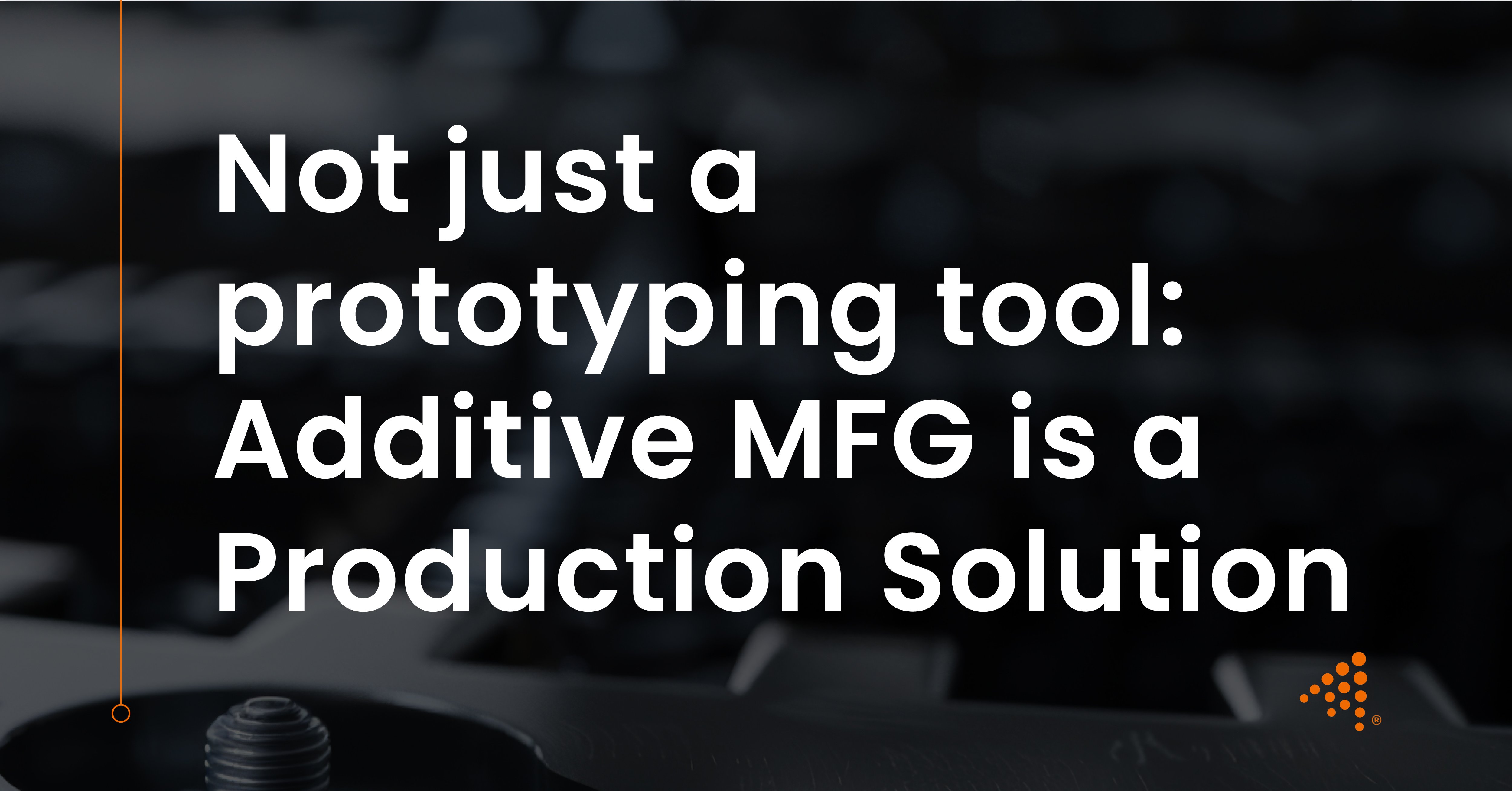Lattice Structure Customization: For Lightweight and Strong Designs
In the pursuit of engineering excellence, the quest to create parts that are both lightweight and incredibly strong is a constant challenge. For R&D...
3 min read
Nick Erickson : Oct 10, 2025 8:15:00 AM

For many years, the conversation around additive manufacturing, often called 3D printing, was anchored to its revolutionary impact on rapid prototyping services. It gave engineers the power to hold a design in their hands just days after creating it digitally. While this remains a valuable application, the technology has matured far beyond this initial use case. Today, advancements in materials, software, and hardware have propelled additive manufacturing into the realm of a viable, scalable, and often superior production solution.
This evolution is not about simply printing more parts faster; it is about manufacturing parts that were previously impossible to make. By harnessing complex geometries like lattice structures and advanced materials like engineering-grade elastomers, production-scale additive manufacturing is unlocking new levels of performance. Technologies like Carbon Digital Light Synthesis (DLS) are at the forefront of this shift, demonstrating that the future of manufacturing is not just about replacing old methods, but creating entirely new possibilities.
One of the most powerful capabilities of modern additive manufacturing solutions is the ability to create intricate, three-dimensional lattice structures within a solid part. A lattice is a network of interconnected struts and nodes that forms a porous, yet strong framework. This is a profound departure from traditional manufacturing, where a part’s strength is typically tied directly to its mass and solid geometry. Lattices effectively decouple mass from mechanical properties, enabling plastic part design optimization for performance-critical applications.
The true power of this technology lies in the ability to precisely tune a part’s performance by selecting a specific lattice type. Engineers now have a toolkit of geometric microstructures they can deploy based on the part's function. A tetrahedral lattice, for instance, offers a very high strength-to-weight ratio, making it ideal for lightweighting components in the aerospace industry. For applications requiring impact absorption, like protective padding, a rhombic or kagome lattice can be engineered to buckle and deform in a controlled way, dissipating energy more effectively than solid material.
This level of control is made accessible through sophisticated software like the Carbon Design Engine. Such tools allow engineers to not only select a lattice type but also to define different “zones” within a single part, each with its own unique lattice structure and corresponding mechanical properties. This means a single component can be rigid and supportive in one area while being flexible and impact-absorbent in another, all within a monolithic design.
Read More About Process Validation & Compliance in Injection Molding for QA
The synergy between advanced geometry and advanced materials is where additive manufacturing services truly shines as a production solution. Modern AM platforms can now process highly durable and resilient elastomers, such as elastomeric polyurethane (EPU). These materials exhibit excellent elasticity and high tear strength, making them suitable for applications that demand both flexibility and toughness.
When these high-performance elastomers are combined with the geometric possibilities of lattice structures, they can outperform traditional materials like foam and latex rubber by a wide margin. The most prominent example is in next-generation helmet padding, where companies like Riddell have partnered with Carbon. Instead of using simple foam, which absorbs impact through compression and degrades over time, these advanced helmets use an elastomeric lattice. Upon impact, the lattice structure flexes and absorbs energy in multiple directions, returning to its original shape immediately. This not only provides superior protection but also results in a pad that is fully washable, breathable, and far more durable. Similarly, ergonomic grips for tools or medical instruments made from latticed elastomers offer a more hygienic and resilient alternative to traditional rubber, which can degrade or cause allergic reactions.
The convergence of complex geometries and production-grade materials has unlocked a host of real-world production applications that were previously unimaginable.
As seen in professional sports, the ability to create custom, energy-absorbing pads is revolutionizing player safety. The same principles are being applied to create more comfortable and effective protective equipment for defense and industrial safety applications. The level of customization allows for gear that is not only safer but also tailored to an individual’s anatomy.
In the medical field, additive manufacturing is being used to produce orthopedic implants with trabecular, bone-like lattice structures. These porous designs encourage osseointegration, where the patient's own bone tissue grows into the implant, creating a more stable and permanent biological fixation. This same "zonal tuning" capability allows for the creation of prosthetic sockets that are rigid for structural support but have soft, flexible edges for patient comfort.
Beyond high-profile applications, this technology is being used to improve countless industrial components. This includes creating vibration-damping mounts for sensitive electronics, conformal cooling channels in manufacturing tools to improve cycle times, and lightweight, consolidated parts for automotive and aerospace vehicles that reduce assembly time and potential points of failure.
Beyond its unique performance capabilities, the additive manufacturing company offers compelling benefits in efficiency and sustainability. As its name implies, it is an "additive" process, meaning it builds parts layer by layer using only the material needed for the final form. This stands in stark contrast to traditional subtractive methods like CNC machining, which start with a solid block of material and carve away, generating significant waste.
The digital workflow of additive manufacturing also lends itself perfectly to automation and on-demand production. A validated digital file can be sent to a global fleet of printers to produce parts wherever they are needed, reducing shipping costs and the carbon footprint associated with complex supply chains. This on-demand model minimizes the waste associated with overproduction and excess inventory, making it a fundamentally leaner approach to manufacturing.

In the pursuit of engineering excellence, the quest to create parts that are both lightweight and incredibly strong is a constant challenge. For R&D...

In an era defined by global disruptions, demand volatility, and an increasing need for product customization, traditional supply chain models are...

In the highly competitive medical device industry, the speed and efficiency of the product development lifecycle are paramount. The ability to move a...